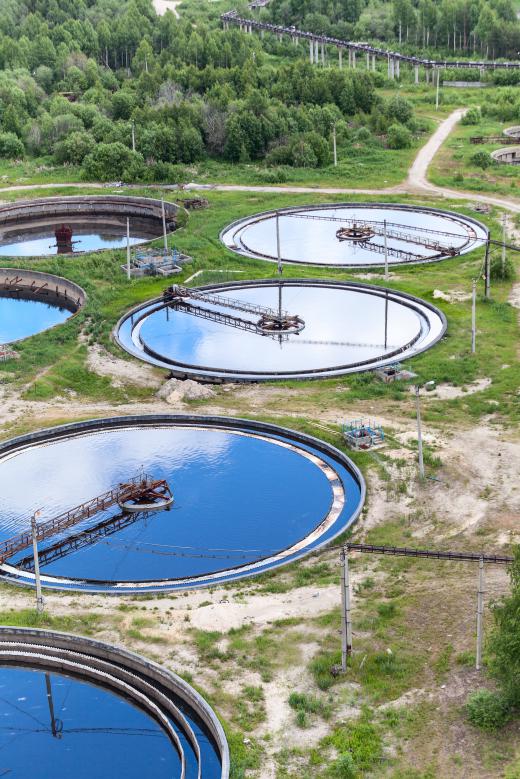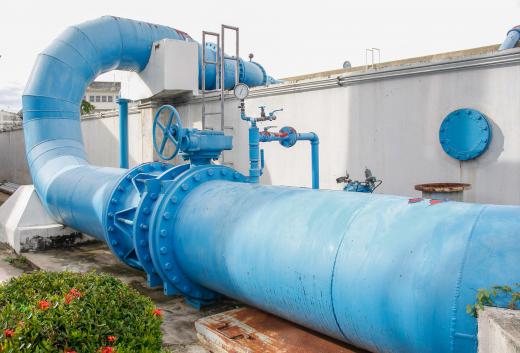A settling tank is piece of separation equipment. It is normally part of a process that involves separating solids from liquid. Sometimes this process is called sedimentation and the tank is referred to as a sedimentation tank.
Waste treatment is a process that often involves the use of a settling tank. How this piece of equipment is used depends on how the system is designed. Most, however, employ the force of gravity in some way.

Generally, when waste water is treated, large materials are filtered out of the liquid by physical barriers. Afterward, the water will still contain smaller solids that need to be removed. To achieve this, the liquid is often held in a settling tank, which can vary in shape and size. Here, suspended particles are allowed to settle to the bottom of the tank and the clarified liquid is allowed to flow through.

Various techniques may be added to facilitate the process. In some cases, settling tank apparatuses may be built on an angle to help clear the fluids. Sometimes the speed of the flowing materials is manipulated to promote settling. It is also possible that more than one sedimentation tank can be used. The material that settles to the bottom of the tank is usually called sludge.
The waste water process used by those who are not connected to sewers is much the same. These people generally use septic tanks, which are a type of settling tanks. A septic tank receives all of the discarded waste from a household. As the material flows into the tank, its speed may be impeded so that the heaviest materials will settle. A major difference between this type of sedimentation tank and those used in waste water treatment facilities is that the clarified liquids are pumped into the ground instead of receiving further treatment.
A settling tank can be used to help protect the surface water. In some places, such as in the United Kingdom, the sewer systems are aged and often incapable of handling the amount of fluids present. Heavy rainfall, for example, may cause the system to be overwhelmed.
To solve this problem, a retention settling tank can be used to store excess water. While the water is held, the solids settle to the bottom. When overflow occurs, the water released into the surface water is much cleaner than it otherwise would be.
Sedimentation can be a delicate process. If settling is to occur and be an effective part of the process, there must be stillness. If the tank or the material within it is agitated, the settled materials can be mixed into the cleansed liquid again.
